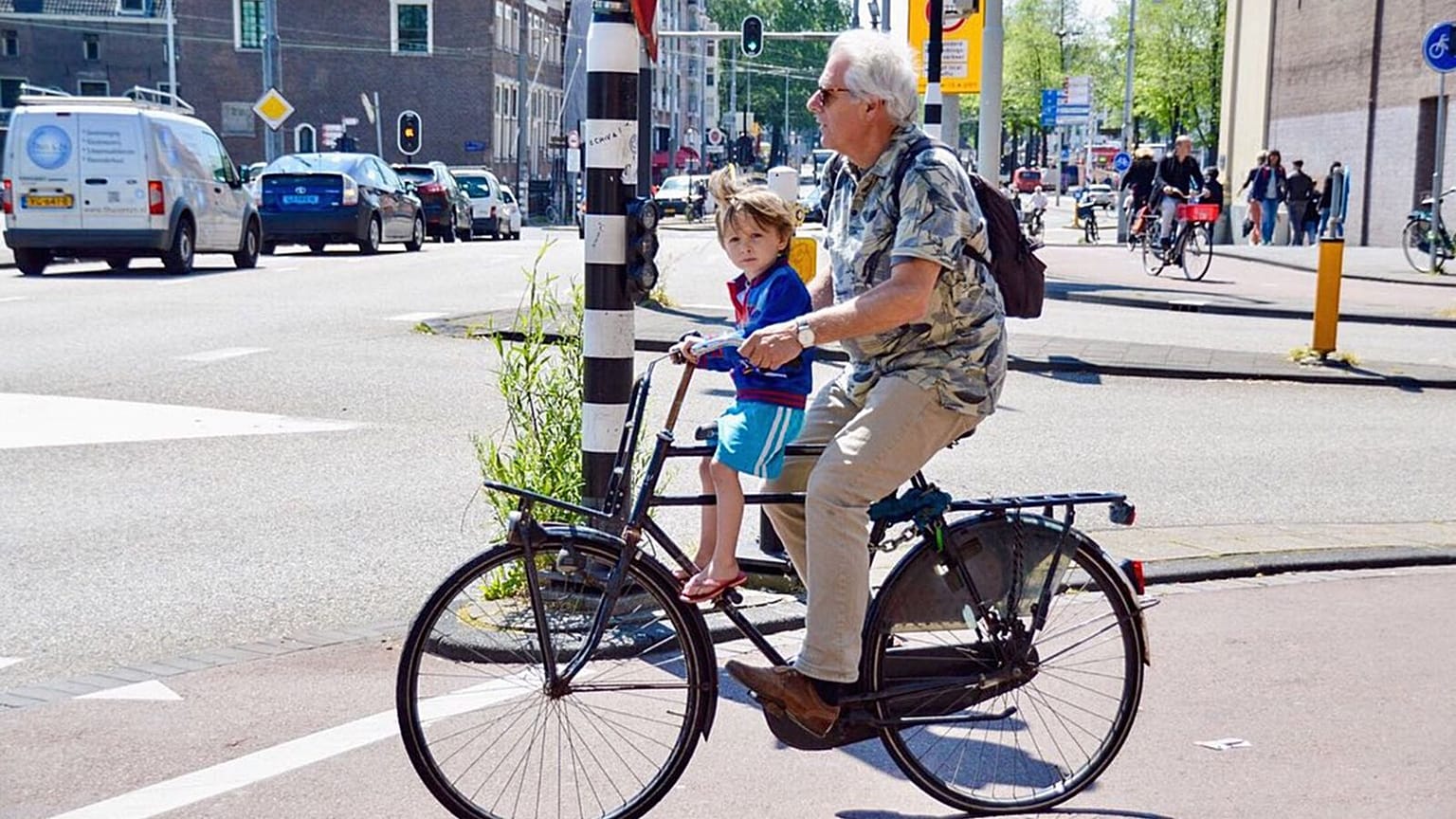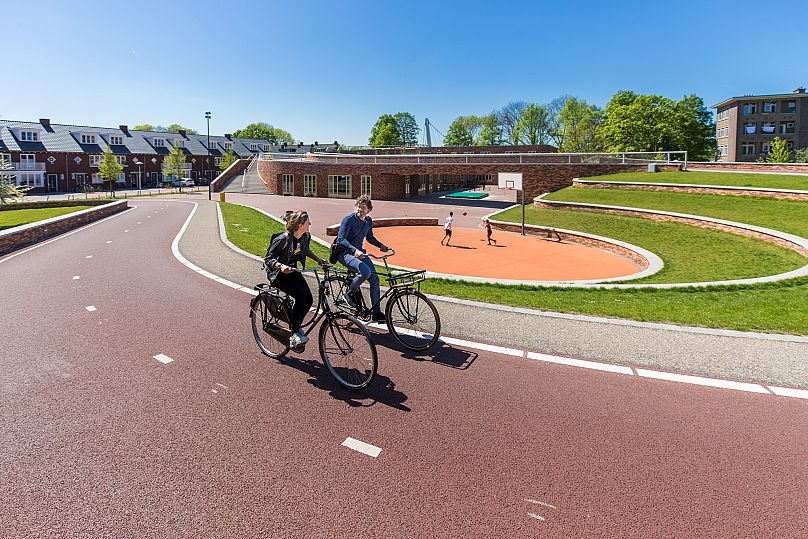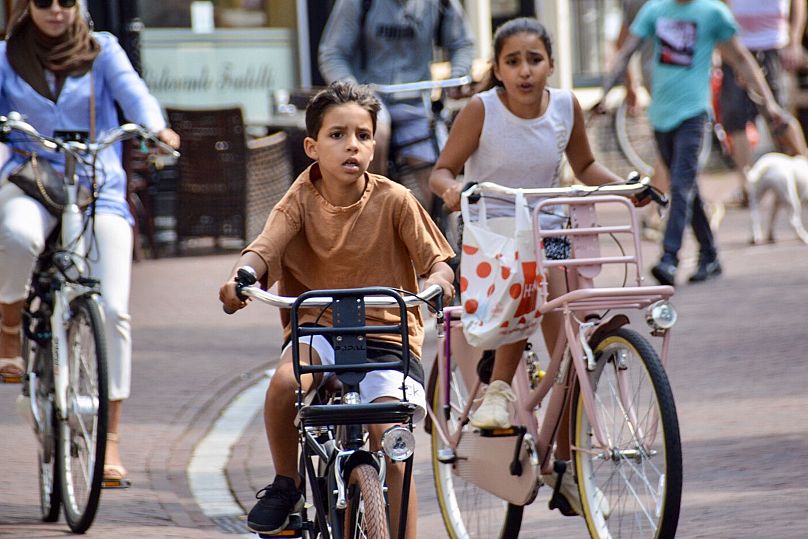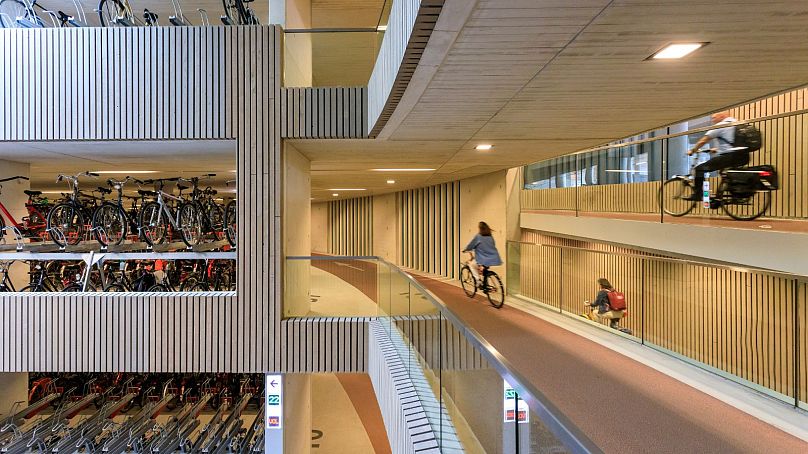With some five billion bicycle trips made a year, the Dutch work hard to keep the wheels of pedal progress turning.
Stand still anywhere in The Netherlands and before long cyclists will whizz past you demonstrating all manner of human functions.
Getting changed, holding hands, carrying a cello, chair or chum - the list goes on. Is there anything the deft Dutch can’t accomplish on two wheels?
But though they might seem to co-cycle with all the natural agility of bees in a hive, the reality is that much goes on behind the scenes to make this flow accessible, safe, environmentally friendly, and inclusive.
Here’s what other European countries can learn.
All aboard: The Dutch believe that cycling is for everyone
In the Netherlands, countless initiatives have been devised to make sure that cycling is inclusive, not just for young people who have grown up with it.
And given that 64 per cent of the entire population cycle at least once a week, something is clearly working.
The government’s ‘Doortrappen’ (pedalling) programme facilitates continued safe cycling for elderly people. Support comes in the form of tools - mirrors for visibility, for example - or as tips.
Since research shows that most accidents happen while the bike is stationary, recommendations include lowering the saddle or choosing a bike frame that offers ease of mounting and dismounting.
Other initiatives reach out to migrants who may not have cycled before. The ‘Make Way For Bikes’ cycling clinic is a course of 10 lessons offered by The Hague municipality at multiple community hubs.
Provided with a safe space to overcome any fears, users are taught to find their balance before contending with traffic.
Benefits include improved employment chances, greater fitness and independence, even “a means for parents to enjoy quality time with their children,” says sustainable urban mobility specialist Tessa Leferink who volunteers at the Moerwijk hub.
The Dutch never stop innovating in cycling safety and infrastructure
In the Netherlands, over 37,000 km of dedicated cycle paths meet intersections designed to keep accident rates as low as possible.
Yet the country hasn’t always been a biker’s utopia. As elsewhere in Europe, twentieth century urban planning revolved, woefully, around car use.
Now a series of U-turns and ongoing innovations leaves the car in the shade. Take Utrecht where an 11-lane motorway once feeding directly into the city made her comeback as the Catharijnesingel city-moat.
Progress is also tangible on roads such as Cartesiusweg where four car lanes have been slashed to two, and at the bicycle bridge Dafne Schippersbrug which connects the historical centre with the city’s newest neighbourhood, Leidsche Rijn.
Uninterrupted longer-distance cycling routes usually travelled by car are also opening, with Utrecht to Amersfoort the first of nine long routes in the province of Utrecht to have its ribbon cut.
Intermodality - the use of more than one mode of transport to make a journey - is also key to cycling’s bigger picture.
Thanks to remarkable digital efficiency at underground train station bike storage facilities (‘Fietsenstallings’) people making an intercity train journey are incentivised to leave their bike at the station, take the train, then hire a public-transport ‘OV-Fiets’ bike on alighting at their destination. 180 bikes per minute can enter Utrecht Centraal fietsenstalling.
Reduced oceans of padlocked bikes overwhelming the pavements makes this a win-win.
Education plays its part in safety too, on the grounds that good practice in childhood feeds a lifetime of sustainable journeys. After preparing with digital games, videos and maps, children in Dutch primary schools can take a practical cycling test with the Fietsexamen programme to skill them up for more independence in their secondary school years.
The Netherlands is more used to exporting than importing cycling expertise - having recently been Webby-award nominated for its AI tool that transposes a vision of cycle-friendliness to any street in the world. But the Dutch are not averse to learning a trick or two from other nations.
‘Beter goed gejat dan slecht bedacht’ (better stolen well than invented badly) you might have heard a Dutch person say when they replicated German ‘Fietsstraten’ (cycle-streets) where cars are guests.
Though environmentalists fear the new right-wing Dutch government will take the country backwards on climate action, the majority of cycling-related resources and decision-making capabilities lie with local authorities.
Peloton Power: The Dutch know that cycling for recreation unlocks physical and mental wellbeing
Bikes aren’t considered to be just for the functional commute to work or school. When cycling becomes a thing of pleasure, the Dutch discovered, and interfaces with culture, sport and community, pedals can directly pull at the heartstrings too.
Just ask The Hague’s cycling mayor Remco de Rijk about his social gatherings. Acting as an intermediary between the cyclist on the street and policy makers, his monthly Fietszwerm (‘bicycle swarm’) events bring all the locals together for a festival-vibe bike ride – wheel-good feel-good in action.
Cycling for sport also plays a vital role in promoting positive bike culture in the Netherlands.
Selected for its stellar public engagement strategies, Utrecht has already hosted all Grand Tours (Giro d'Italia, Tour de France and the Vuelta) and come 12 August Rotterdam and The Hague will take centre stage on the first leg of the women’s Tour de France Femmes.
“The race will pass through residential areas where there is low-bike-usage,” explains Lidy Münninghoff from local racing club Kek. “The aim is to show women that they too can race.”
Meanwhile, the nation’s hearts become ever healthier as cycling uptake increases. “We’re always looking for blind spots and ways to stimulate more cycling,” says Ernest van den Bemd, super networker at Utrecht Bike Community.
He harnesses cycling energy every which way including putting medical professionals’ heads together at networking events (on bikes, of course) - given the overwhelmingly positive correlation between cycling and health benefits.
Recycle cycle: The Dutch encourage their citizens to repair, not replace
The Netherlands famously has more bikes than people, and sometimes they get out of hand - with thousands of wheels finding their way into its famous waterways.
To avoid the issue of mass bike soup, numerous initiatives drive home the message that to maintain the bike you’ve got is better than to abandon and source another.
The Hague municipality gathers thousands of unwanted excess bikes to upcycle them and distribute to children who don’t own one. While students at Utrecht University’s Science Park campus can learn how to repair their bike over koffee en taart at Fietshub.
Here, people struggling to find work can also apply to learn refurb skills to help them get jobs.
Going one step further, Roetz-Bikes in Amsterdam deconstructs second-hand bikes, then uses the parts to remake and recirculate bikes back into the system.
It has also pioneered the ‘Life bike’: customised, high-spec, modular and service-friendly vehicles that will literally last a rider’s lifetime.





















